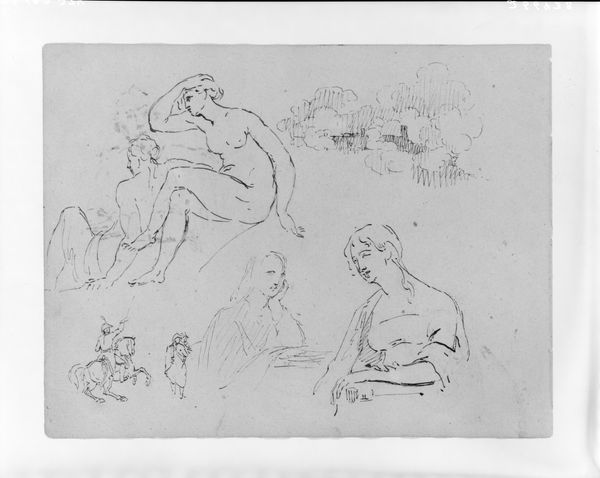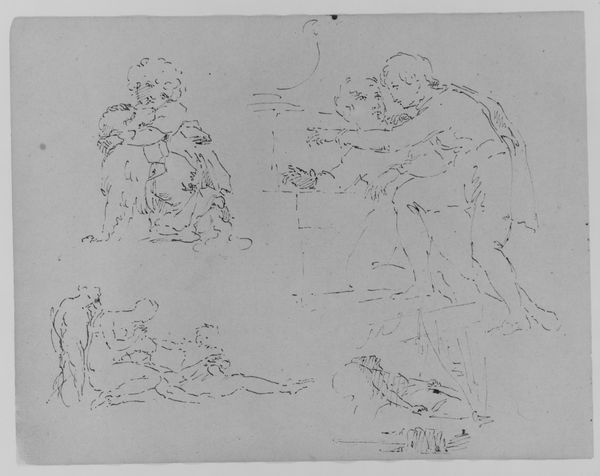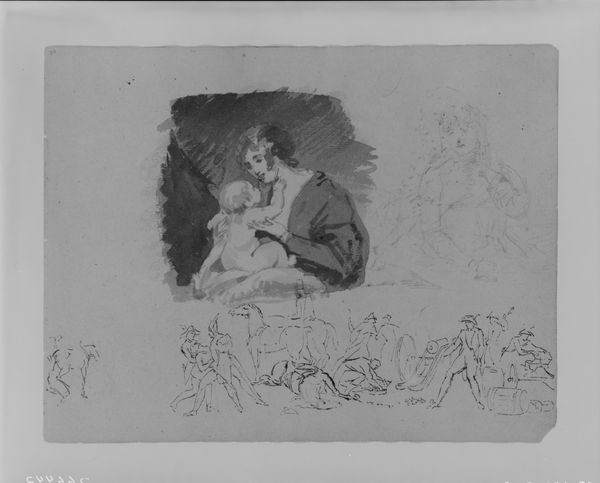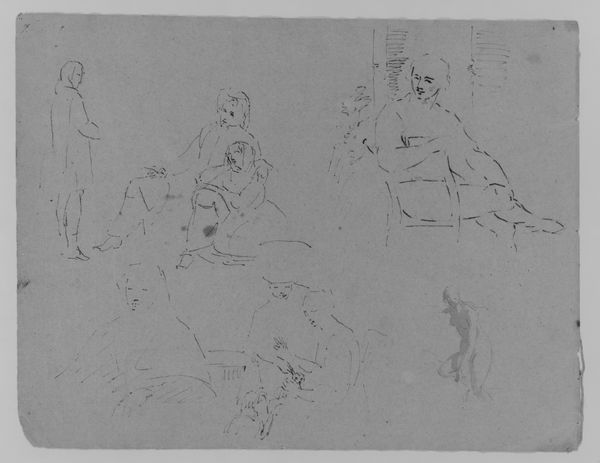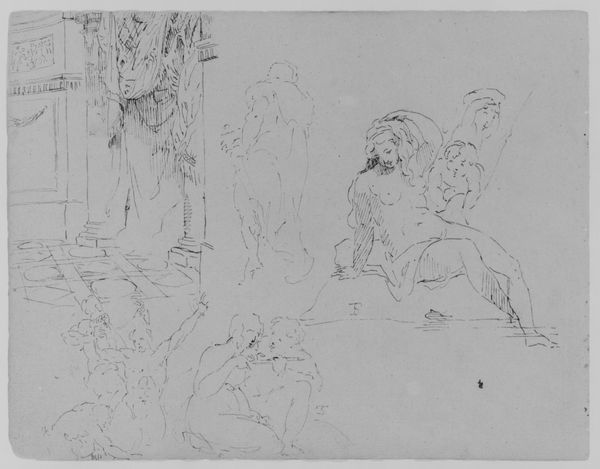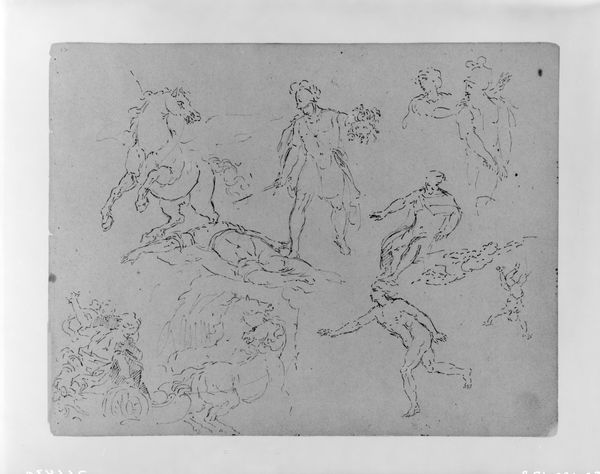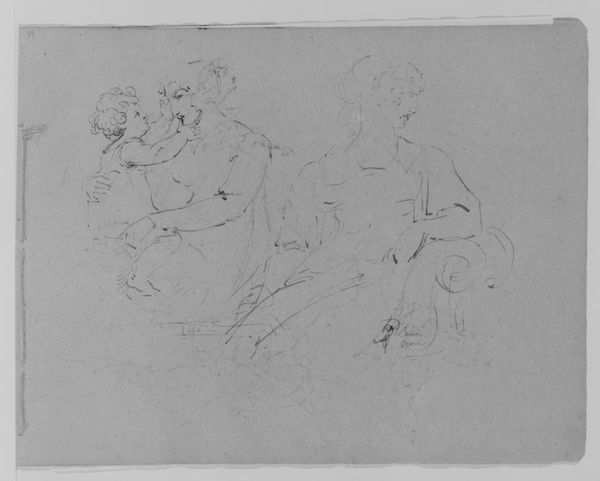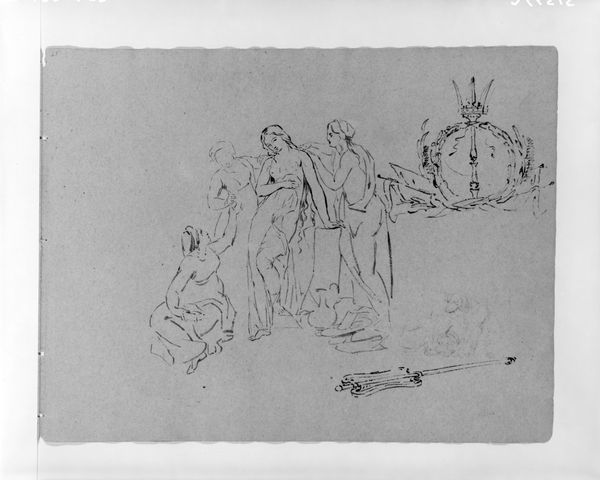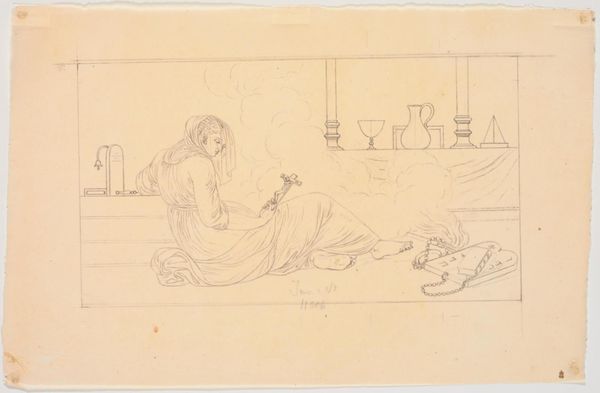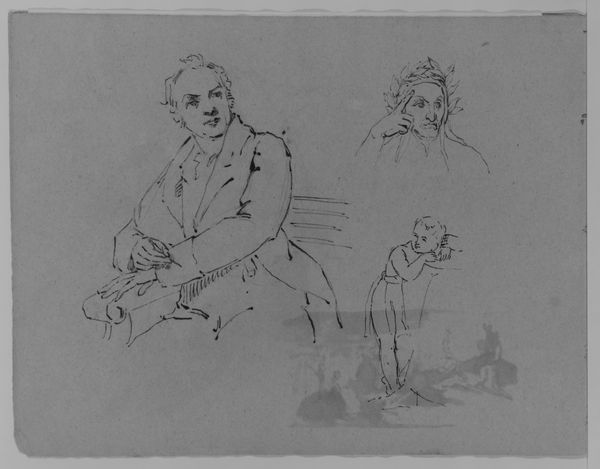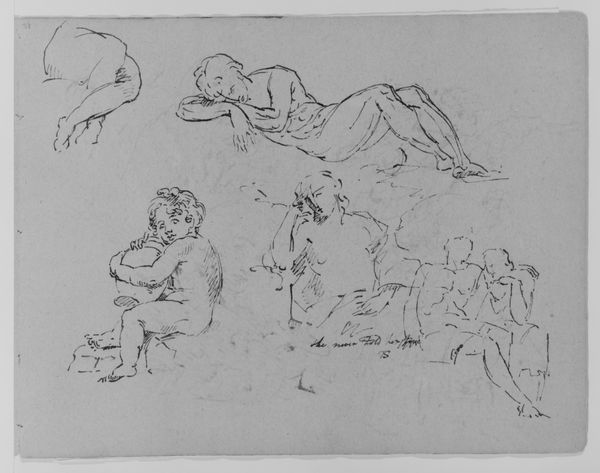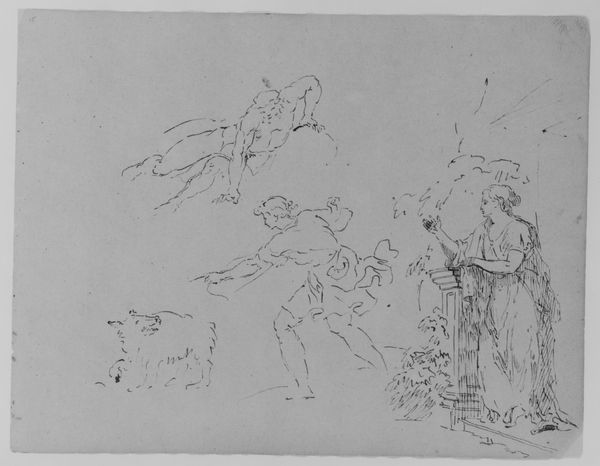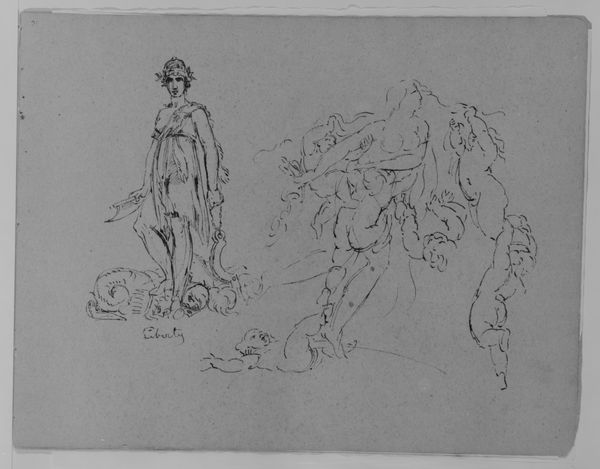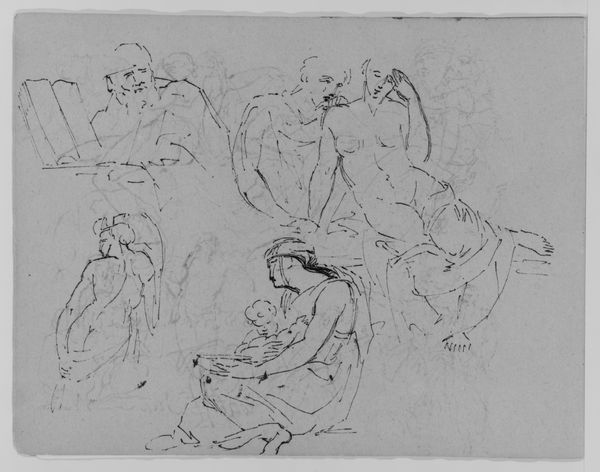
Seated Woman Holding Baby; Ionic Porch and Balustrade, Three Fleeting Figures (from Rubens Massacre of Innocents? Or Allegory of War) (from Sketchbook) 1810 - 1820
0:00
0:00
drawing, paper, pencil
#
portrait
#
drawing
#
mother
#
pencil sketch
#
paper
#
pencil
#
history-painting
Dimensions: 9 x 11 1/2 in. (22.9 x 29.2 cm)
Copyright: Public Domain
Curator: Before us we have a pencil sketch by Thomas Sully, dating from about 1810 to 1820, titled "Seated Woman Holding Baby; Ionic Porch and Balustrade, Three Fleeting Figures (from Rubens Massacre of Innocents? Or Allegory of War)." It's currently held at the Metropolitan Museum of Art. What's your initial impression? Editor: Melancholy. There's a delicate tenderness in the mother and child contrasted by the unsettling sketches beneath, which appear almost violent. It's as though peace and turmoil are inhabiting the same space, creating a deep unease. Curator: The sketch contains a real visual tension. Sully’s working title references both Rubens' "Massacre of the Innocents" and an "Allegory of War", highlighting the vulnerability of new life amid violence and potential slaughter. The image appears as a study that could allude to an anxious social context of that era, given America’s nascent political and military conflicts. Editor: It makes the image of the mother and child almost painfully universal, doesn't it? She becomes not just a mother, but a symbol of hope and innocence besieged. Her averted gaze, and the child's utter trust are deeply moving in light of the implied chaos. The classical architectural setting only heightens the feeling that this scene has echoed through centuries. Curator: I find the unfinished quality of the sketch significant. The figures at the bottom feel less formed than the seated woman, giving us a sense that they exist as possible alternative studies for war figures. Sully is clearly toying with themes of sacrifice and conflict within a visual vocabulary drawing from classical tropes, particularly when situated on an imposing architectural background that represents tradition. Editor: Absolutely. The rapidly sketched figures, almost like shadows, introduce the ominous sense that the domestic idyll of mother and child is transient. Sully has a remarkable way of making concrete, historical narratives of conflict through his figures in various cultural settings through time. Curator: The ambiguity Sully creates is its power. The image leaves space to dwell on broader implications about social upheaval and its toll. Editor: Indeed. This deceptively simple drawing resonates because it speaks to a timeless struggle between peace and chaos, beautifully and tragically captured.
Comments
No comments
Be the first to comment and join the conversation on the ultimate creative platform.
